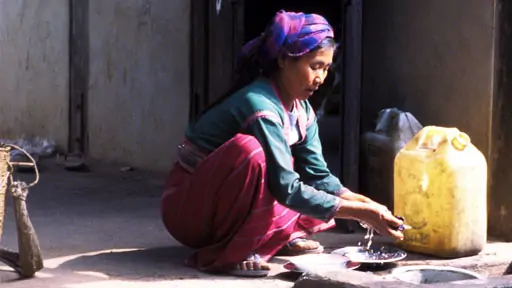Indigenous Calendar October, 2013: Palaung Grandchildren May See Democracy in Burma

Burma (Myanmar) has been prominent in the news recently. Although its electorate voted (in a landslide victory in the country's first election in thirty years) for a democratic government as far back as 1990, it is only in the last eighteen months that the government has showed signs of taking the idea of democracy seriously. Before then, and with the exception of only a few countries, Burma was shunned and sanctioned by the international community.
On June 16, 2012, the winner of that 1990 election, Aung San Suu Kyi, formally accepted her Nobel Peace Prize (awarded to her in 1991) in Oslo, Norway. In her acceptance speech she made many references to her country's ethnic groups, such as: "The [democratic] reform measures... can be sustained only with the intelligent cooperation of all internal forces: the military, our ethnic nationalities [my emphasis], political parties, the media, civil society organizations, the business community and, most important of all, the general public." She also advocated a "cautious optimism" about the continued democratization of her country.
About a month later I spent a day in her country. I entered Burma also with cautious optimism that I would be able to speak openly to people about the past year and receive open and honest answers. I believe I did receive them. And they were overwhelmingly that nothing in their day-to-day lives had changed.
As recently as September 24, 2012, speaking to an audience at the University of Louisville in the United States, she again made reference to her country's ethnic groups: "We [Burma] are a country of many peoples, of many different ethnic nationalities... and that only strengthens us as a nation." As recently as September 29, 2012, current president Thein Sein said in an interview that he would support a future Suu Kyi presidency if she were democratically elected (which she was in 1990).
Amid these developments I reflect on the many days and nights I've spent in indigenous minority villages in Burma visiting many of her country's ethnic nationalities (although most are still off-limits to foreigners). One of these nationalities is the Palaung. The Palaung are, in general and relatively, among the most prosperous of Burma's indigenous minority peoples. I recently found myself reflecting on my time in one particular Palaung village where the quality of the houses, the level of modernity and the apparent standard of living were surprisingly high. This photo was taken in that village. It is unlikely that this Palaung lady will live long enough to see any of the real changes in her native Burma that may one day improve the lives of her grandchildren.
The Palaung are featured in our documentary, Indigenous Peoples of Southeast Asia.
If you enjoyed reading this article, please consider supporting independent, advertising-free journalism by buying us a coffee to help us cover the cost of hosting our web site. Please click on the link or scan the QR code. Thanks!


